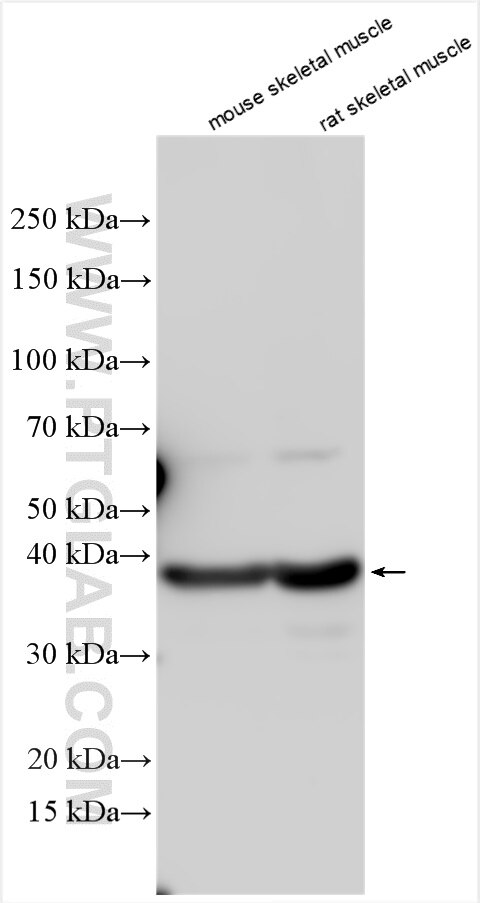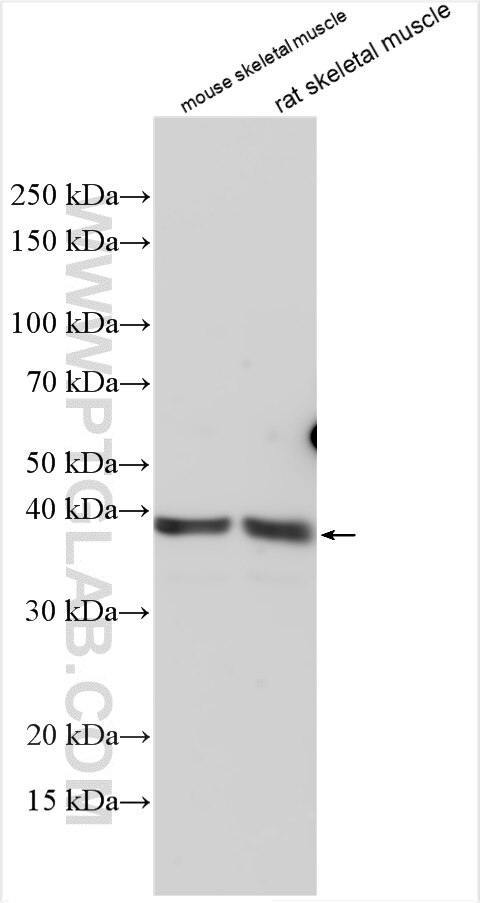Anticorps Polyclonal de lapin anti-AGMAT
AGMAT Polyclonal Antibody for WB, ELISA
Hôte / Isotype
Lapin / IgG
Réactivité testée
Humain, rat, souris
Applications
WB, ELISA
Conjugaison
Non conjugué
N° de cat : 21899-1-AP
Synonymes
Galerie de données de validation
Applications testées
| Résultats positifs en WB | tissu de muscle squelettique de souris, tissu de muscle squelettique de rat |
Dilution recommandée
| Application | Dilution |
|---|---|
| Western Blot (WB) | WB : 1:2000-1:16000 |
| It is recommended that this reagent should be titrated in each testing system to obtain optimal results. | |
| Sample-dependent, check data in validation data gallery | |
Informations sur le produit
21899-1-AP cible AGMAT dans les applications de WB, ELISA et montre une réactivité avec des échantillons Humain, rat, souris
| Réactivité | Humain, rat, souris |
| Hôte / Isotype | Lapin / IgG |
| Clonalité | Polyclonal |
| Type | Anticorps |
| Immunogène | AGMAT Protéine recombinante Ag13609 |
| Nom complet | agmatine ureohydrolase (agmatinase) |
| Masse moléculaire calculée | 38 kDa |
| Poids moléculaire observé | 38 kDa |
| Numéro d’acquisition GenBank | BC005090 |
| Symbole du gène | AGMAT |
| Identification du gène (NCBI) | 79814 |
| Conjugaison | Non conjugué |
| Forme | Liquide |
| Méthode de purification | Purification par affinité contre l'antigène |
| Tampon de stockage | PBS avec azoture de sodium à 0,02 % et glycérol à 50 % pH 7,3 |
| Conditions de stockage | Stocker à -20°C. Stable pendant un an après l'expédition. L'aliquotage n'est pas nécessaire pour le stockage à -20oC Les 20ul contiennent 0,1% de BSA. |
Informations générales
AGMAT is a metallohydrolase and belongs to the arginase family. AGMAT plays an important role in amino acid metabolism and can hydrolyze agmatine into urea and putrescine. AGMAT has been shown to play an important role in the development of tumors, including colorectal cancer, lung adenocarcinoma, and pancreatic adenocarcinoma(PMID: 36680755; PMID: 31699997; PMID: 35837051 ).
Protocole
| Product Specific Protocols | |
|---|---|
| WB protocol for AGMAT antibody 21899-1-AP | Download protocol |
| Standard Protocols | |
|---|---|
| Click here to view our Standard Protocols |



